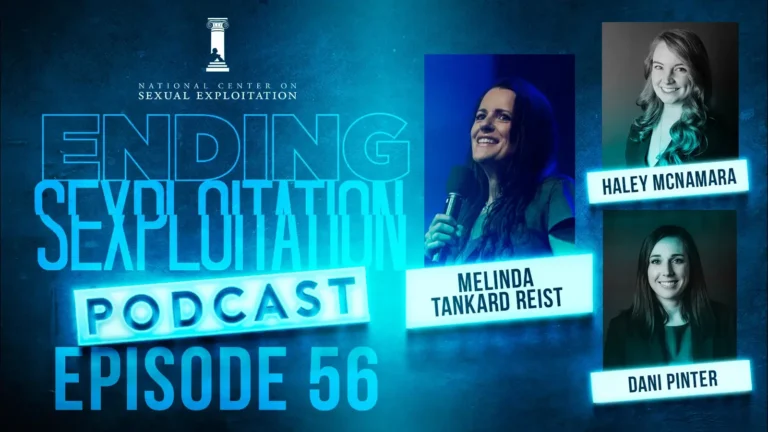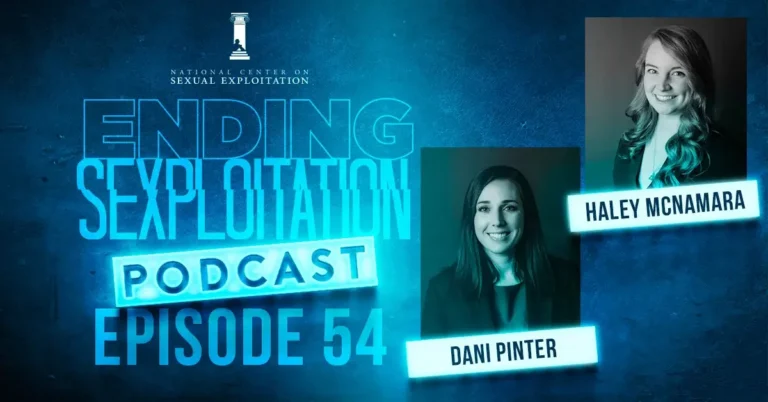This research summary was co-authored by Lisa Thompson (Vice President and Director of the NCOSE Research Institute) and Jordan Marshall (Research Assistant).
Simone Kühn and Jürgen Gallinat, “Brain Structure and Functional Connectivity Associated with Pornography Consumption: The Brain on Porn,” JAMA Psychiatry 71, no. 7 (2014): 827-834, doi:10.1001/jamapsychiatry.2014.93.
Key Takeaway:
This German study of 64 men explored the relationship between the amount of pornography they consumed (i.e., dosage) and changes to their brains in areas influencing decision-making, motivation, and reward. The study found that more frequent, but not necessarily addictive pornography use, was associated with negative structural and functional changes in the brain, namely: 1) reduced gray matter,[1] 2) decreased reward circuit activation when viewing pornography,[2] indicating possible tolerance,[3] a known vulnerability for addiction, and 3) less functional connectivity[4] between the reward system and the prefrontal cortex. Thus, this study showed that frequent and regular pornography users have smaller reward systems compared to those who use pornography seldom or irregularly.[5] The findings also suggest that “subjects with high pornography consumption require even stronger stimuli to reach the same reward level.”[6] To hear the lead author discuss this study watch this brief video.
Study Highlights
Researchers at the Max Planck Institute for Human Development in Germany conducted a study exploring whether the amount of pornography one consumes is associated with structural and functional changes to the brain’s frontostriatal network—neural pathways connecting regions of the brain (e.g., prefrontal cortex, ventral tegmental area) which influence decision-making, motivation, and reward.[7] The subjects were 64 adult males ranging in age from 21-45 years without psychiatric or neurological disorders. Researchers assessed pornography consumption by hours of current pornography (PH) use per week and years of pornography use. They tested for cue-reactivity—that is Pavlovian-type responses to conditioned cues—to pornography and nonsexual images (i.e., physical exercise), and evaluated for both neural structure and functional resting-state connectivity differences in their brains.
Findings
- Participants reported an average of 4.09 weekly hours of pornography use.
- Pornography Use, Alcohol Use, and Mental Health: Via the administration of screening tests researchers found that men with increased levels of pornography use scored higher for Alcohol Use Disorder and depression. However, the nature of the relationship between pornography, alcohol, and depression in this study is unclear. For instance, do alcoholics have a greater predilection to use pornography than non-alcoholics, or do people who consume more pornography also use more alcohol perhaps as a means of ameliorating other possible negative effects of pornography use? This study did not explore such questions, but the researchers noted this finding merits further investigation.
- Increased Pornography Use Associated with Decreased Gray Matter: Researchers found a significant negative association between cumulative pornography consumption (i.e., greater current weekly PHs and estimated years of pornography use) and gray matter volume in the right striatum, specifically the caudate nucleus. This association to structural brain change—less gray matter—remained significant even when controlling for Internet addiction and sex addiction, showing that structural correlates associated with moderate pornography consumption are not simply byproducts of an accompanying Internet addiction. This finding is also noteworthy because changes to brain volume (in some cases increases and others decreases) have been associated with addictions like cocaine[8] and alcohol.[9] While the authors of this study believe frequent pornography use likely led to this change, they also cautioned that less gray matter volume among moderate pornography users may be a precondition, rather than a cause of pornography use.[10]
- Increased Pornography Use Associated with Decreased Functional Activity: Men with greater PHs had less functional activity (i.e., blood oxygenation level-dependent signal) during a sexual cue-reactivity test in the left putamen.[11] In other words, compared to men who consume less pornography, the brains of higher consumers react less to pornography. This demonstrates decreased sensitivity to sexual reward and suggests that over time, men with greater pornography use may require novel and more extreme pornography in order to achieve reward (i.e., orgasm).
- Increased Pornography Use Associated with Decreased Functional Connectivity: Functional connectivity from the structural cluster in the right caudate to the left dorsolateral prefrontal cortex (DLPFC) was lower with increased PHs. The DLPFC of the brain is considered “a key area for the integration of sensory information with behavioral intentions, rules, and rewards,” and ultimately “exerting cognitive control over motor behavior.” Importantly, impairment of prefrontal cortex—which has been described as the brain’s braking system[12]—is one of the major neurobiological changes to the brain identified in animal and human research on substance addictions.[13]
Commentary from the NCOSE Research Institute
This study revealed that men with greater cumulative pornography use, but not necessarily addictive levels of use, had decreased gray matter, and exhibited reduced structural and functional connectivity in the brain. Why do these findings matter?
First, who wants a smaller brain? No one we know. While it is possible that men who use pornography more frequently naturally have smaller brains, this seems unlikely. It is more plausible that high pornography use is inducing volumetric changes to the brain structure as has been demonstrated in drug addiction research.
Second, while additional research is needed, this study suggests that with time the brains of pornography users adapt to sexual stimuli and thus require novel or more extreme stimuli in order to achieve reward—a phenomenon referred to commonly as “tolerance” in addiction literature. The experience of tolerance among frequent pornography users may be part of the reason why the Internet is awash in oceans of pornography, as the need for something novel, surprising, or extreme takes users on a quest for just the right image or video in order to “finish.”
Third, this study found decreased functional connectivity in the region of the brain responsible for aspects of cognitive control such as response inhibition, behavioral flexibility, attention, and future planning among men with higher pornography dosage. Thus, increased pornography use may result in neuroadaptations to the brain that actually inhibit one’s ability to decrease one’s future pornography use. It’s not surprising then to learn that “dysfunction of this circuity has been related to inappropriate behavioral choices, such as drug seeking, regardless of negative consequences.”[14]
These three findings converge with the large body of research showing similar negative brain impacts among those with other substance and behavioral disorders, thus suggesting that pornography use can become compulsive or addictive.
Finally, the researchers observed a positive association between pornography use and increased alcohol use and depression. The nature of this association is unclear but nevertheless concerning, and as the researchers noted, warrants further investigation.
Share on Socials
A German study of male pornography users found that higher levels of pornography use were associated with decreased gray matter in the brain, even when controlling for Internet addiction and sex addiction. #YourBrainOnPorn Share on X Research found that men who used pornography more frequently than other men had decreased functional brain activity suggesting tolerance, meaning that increased pornography use may lead to the need for novel and more extreme material.… Share on X A study of male pornography users found increased pornography use was associated with decreased functional connectivity in the region of the brain responsible for exerting cognitive control over response inhibition, attention, and future… Share on XReferences
[1] In the caudate nucleus.
[2] In the left putamen.
[3] Todd Love et al., “Neuroscience of Internet Pornography Addiction: A Review and Update,” Behavioral Sciences 5 (2015): 388–433, doi:10.3390/bs5030388.
[4] Between the right caudate of the stratium and the left dorsolateral prefrontal cortex (DLPFC).
[5] Max Planck Institute for Human Development, “Viewers of Pornography Have a Smaller Reward System: Study Shows a Connection between Consumption and Brain Structure,” June 2, 2014, www.mpib-berlin.mpg.de/press-releases/pornography-is-a-social-taboo.
[6] Ibid. Note: The researchers explain that these findings could also be the result a “precondition” that determines one’s level of pornography consumption and explain they will conduct further research to clarify.
[7] This brief description of the frontostriatal network is derived from Lindsay M. Yager et al., “The Ins and Outs of the Striatum: Role in Drug Addiction,” Neuroscience (2015): 529‒541, doi:10.1016/j.neuroscience.2015.06.033; and, Sibel Tekin and Jeffrey L. Cummings, “Frontal-Subcortical Neuronal Circuits and Clinical Neuropsychiatry, an Update,” Journal of Psychosomatic Research 53 (2002): 647‒654.
[8] Leslie K. Jacobsen, “Quantitative Morphology of the Caudate and Putamen in Patients with Cocaine Dependence,” American Journal of Psychiatry 158 (2001): 486–489.
[9] Jana Wares et al., “Amydala Volume Associated with Alcohol Abuse Relapse and Craving,” American Journal of Psychiatry 165 (2008): 1179–1184.
[10] Max Planck Institute for Human Development, ibid.
[11] Measured by lower task-related blood oxygenation level-dependent (BOLD) activity.
[12] Laurence Steinberg, “A Social Neuroscience Perspective on Adolescent Risk-Taking,” Development Research 28, no. 1 (2008): 78–106, doi:10.1016/j.dr.2007.08.002.
[13] Simone Kühn and Jürgen Gallinat, “Brain Structure and Functional Connectivity Associated with Pornography Consumption: The Brain on Porn,” JAMA Psychiatry 71, no. 7 (2014): 827-834, doi:10.1001/jamapsychiatry.2014.93; Steven E. Hyman, Robert C. Malenka, and Eric J. Nestler, “Neural Mechanisms of Addiction: The Role of Reward-Related Learning and Memory” The Annual Review of Neuroscience 29 (2006): 565–598, doi:10.1146/annurev.neuro.29.051605.113009.
[14] Kühn and Gallinat, ibid.



